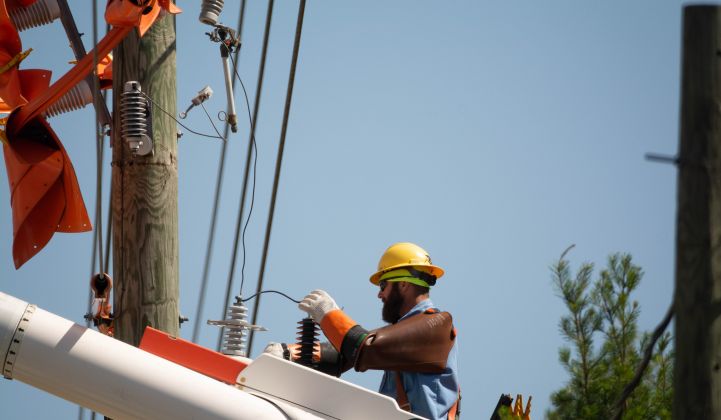The Puerto Rico Electric Power Authority will be required to acquire thousands of megawatts of renewables and storage in the coming years, according to a Monday order from the island’s energy regulators that also rejected many natural-gas additions included in the utility's integrated resource plan.
In its IRP filed last year, state-owned PREPA presented a preferred scenario that included 1,800 megawatts of solar PV and 920 megawatts of energy storage additions in the coming five years, plus eight minigrids that could be isolated to power certain sections of the island if the electricity system is disrupted.
The Puerto Rico Energy Bureau this week presented a modified plan that included a mix with an even higher proportion of renewables: at least 3,500 megawatts of solar and more than 1,300 megawatts of storage by 2025.
Regulators rejected PREPA’s $5.9 billion plan for its minigrid transmission system, with plans to establish a new proceeding to optimize distribution and transmission spending and analyze potential cheaper resiliency options. The bureau also wants PREPA to hold off on many new gas additions, calling for “limited replacement” of older units through a competitive procurement process that considers a wide range of resources.
Taken together, the order significantly revamps the utility's plan, prepared by Siemens, which many environmental and clean energy groups had criticized as too reliant on natural gas. Regulators framed their decision on the utility’s IRP as a “no-regrets” approach to Puerto Rico’s electricity transition.
“The most important issues were rejected, specifically the reliance on new [liquefied natural gas] terminals in Puerto Rico and new natural-gas facilities,” said Agustín Carbó-Lugo, a senior manager at the Environmental Defense Fund’s energy program and a former chair of the Puerto Rico Energy Bureau. “I thought that was huge.”
In addition to relying on more renewables, the proposal from regulators will cost less, around an estimate of $13.8 billion compared to about $14.4 billion for PREPA’s preferred plan.
Regulators approved billions of dollars for transmission and distribution hardening and up to $5 million for initial permitting and siting work on a proposed gas plant, though the bureau did not give that plant the official go-ahead. PREPA has also received approval to convert the oil-fired San Juan plant to run on natural gas, a process that’s already underway and that the bureau affirmed in its order.
PREPA told Greentech Media it was still in the process of evaluating the document and possible next steps.
In addition to coping with an electricity grid decimated by hurricanes and, more recently, earthquakes, Puerto Rico is working toward a legally mandated 100 percent renewable portfolio standard. Thus far, the island of 3.2 million people reached only about 2 percent of electricity from renewables. Planning for the future is further complicated by falling electricity demand on the island, a situation potentially exacerbated by the coronavirus pandemic.
Those conditions have made for a closely watched resource-planning process.
The potential for VPPs and distributed generation
In its next integrated resource plan, to cover the period beyond 2025, the bureau asked PREPA to “explicitly account” for the potential for virtual power plants — a growing trend on the U.S. mainland — as more residents install solar and storage. Currently, the bureau argues, “PREPA treats distributed solar PV as an exogenous and fixed set of resources whose deployment simply happens, and for which PREPA must account.”
The modified plan crafted by regulators instead emphasizes “the central role that customers can play through provision of energy supply and [demand response]” — a change in ideology that echoes the ideas of some clean-energy advocates on the island who want to see Puerto Rico move toward an electricity grid focused on distributed generation and “prosumers.”
The bureau is working on regulations for demand response and energy efficiency, which regulators will require PREPA to consider as it implements its plan.
Regulators have now tasked PREPA with looking into the potential for offshore wind and refurbishing the island’s hydro resources.
PREPA, which will soon hand over management of the grid to a third party, is required by law to reach 40 percent renewables by 2025. It’s unclear if PREPA will get to work immediately, though “there’s a lot of work to be done,” said Carbó-Lugo. The utility has appealed past bureau decisions.
This story has been updated with comment from PREPA.




